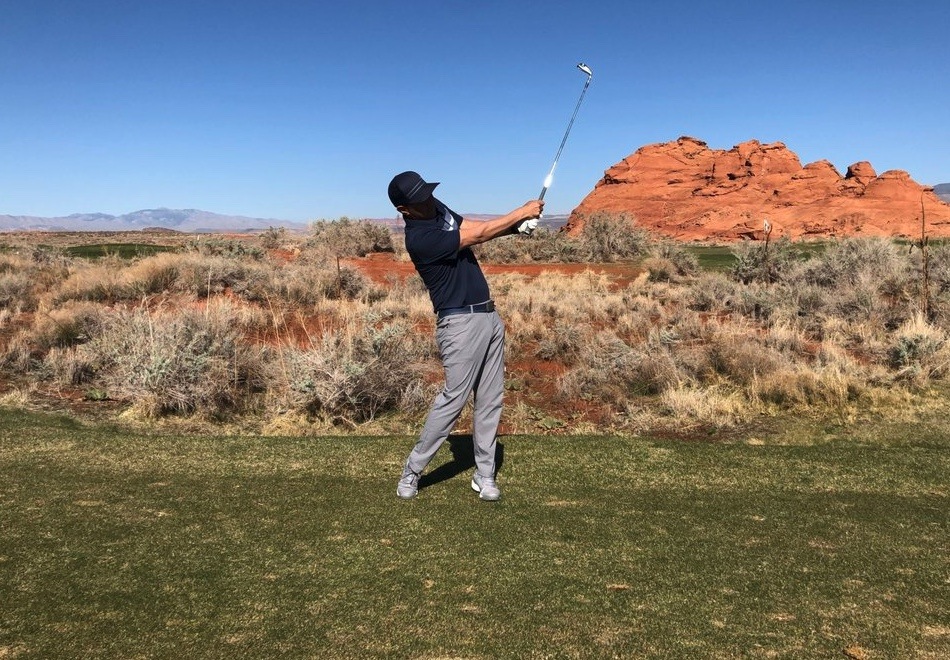Golf, often considered a game of precision and strategy, demands more than just power and accuracy. One often-overlooked aspect of a golfer’s arsenal is the art of “letting up” – a strategic move that involves intentionally dialing back the power on a shot to gain better control, accuracy, and finesse. We’ll explore the nuances of letting up in golf, examining the scenarios where it’s most effective, the techniques involved, and the strategic advantages it offers to golfers seeking a more nuanced approach to the game.
What is Letting Up in Golf?
Letting up in golf refers to the intentional reduction of power and swing speed to reduce risk of either a poorer subsequent shot or even a penalty. This strategic approach is employed to control distance, enhance accuracy, and navigate challenging course conditions. By deliberately dialing back the intensity of their swing, golfers can tailor their shots to specific distances and course conditions, showcasing a nuanced and strategic approach to the game.
When to Let Up in Golf?
Golfers may choose to let up on their shots when faced with challenges such as tight fairways, small greens, or the need to avoid hazards. It is a skill that involves selecting the right club, adjusting grip and stance, and focusing on a controlled and measured swing.
Tight Fairways
On narrow fairways, where accuracy is crucial, letting up can help golfers avoid overshooting or straying into the rough. A controlled shot increases the likelihood of finding the short grass.
Approach Shots to Small Greens
When facing smaller greens or challenging pin positions, letting up allows golfers to control the distance more precisely. This enhances the chance of landing the ball close to the pin for a better chance at making a putt.
Avoiding Hazards
Letting up becomes essential when navigating around water hazards, bunkers, or other obstacles. By intentionally reducing power, golfers minimize the risk of finding trouble and increase the chances of a successful and safe shot.
Windy Conditions
In windy conditions on the golf course, letting up can be effective in controlling the trajectory of the ball. A reduced swing speed helps keep the ball lower, making it less susceptible to the influence of strong crosswinds.
Approach Shots from Rough or Difficult Lies
When playing from challenging lies, such as thick rough, a buried ball or uneven terrain, letting up can provide better control over the shot. A more measured swing reduces the likelihood of mishits.
Strategic Play on Par-3s
On par-3 holes where precision is key, golfers may choose to let up to ensure they land on the green with accuracy. This is especially important when the pin is placed in a challenging location.
Match Play Situations
In match play, where every hole is a separate competition, letting up strategically can put pressure on opponents. Playing conservatively when ahead can force competitors to take risks.
Recovery Shots
When recovering from a challenging position, such as being in the trees or in deep rough, letting up allows golfers to focus on control rather than distance, increasing the chances of advancing the ball safely.
Putting and Short Game
Even on the greens, golfers may employ a softer touch or “let up” on their putting stroke to control the speed and direction of the ball more precisely.
Techniques for Letting Up
Club Selection
Choose a club with less loft than you might typically use for the distance. A lower lofted club, such as a 7-iron instead of a 6-iron, can help reduce backspin and control the trajectory.
Grip and Stance
- Maintain a controlled and relaxed grip to reduce tension in your swing. Adopt a slightly shorter backswing to ensure better control and a more measured release through impact.
- Adjust your stance to a more centered and balanced position. This helps in maintaining stability and control during the swing.
Swing Speed
- Focus on a smoother, more controlled swing. Resist the temptation to overexert, and concentrate on a balanced tempo throughout the swing.
- Gradually accelerate through the impact zone, allowing for a controlled release of the clubhead.
Strategic Advantages to Letting Up
Navigating Tight Fairways
On narrow fairways, letting up can reduce the risk of overshooting or straying off course. The controlled distance and accuracy enhance the likelihood of finding the short grass.
Approach Shots to Small Greens
When faced with smaller greens or challenging pin positions, a well-executed let-up shot allows for precision in distance control, increasing the chances of landing the ball close to the pin.
Avoiding Hazards
Letting up becomes crucial when navigating around water hazards, bunkers, or other obstacles. The controlled shot minimizes the chance of finding trouble and allows for safer play.
Mental Aspects
Confidence and Focus
Letting up requires a certain level of confidence in one’s abilities. Trusting the strategy and maintaining focus on the task at hand are crucial for success.
Adaptability
Golf is a dynamic game, and conditions can change rapidly. Golfers who can adapt and incorporate letting up into their strategy demonstrate a higher level of skill and versatility on the course.
In the ever-evolving landscape of golf strategy, the ability to let up and employ a measured approach to shots is a skill that separates the exceptional golfers from the rest. By understanding when and how to let up, golfers can gain a strategic edge, navigating the challenges of the course with finesse and precision. Embrace the art of letting up, refine your technique through practice, and watch as your strategic prowess transforms your game on the fairways and greens.


